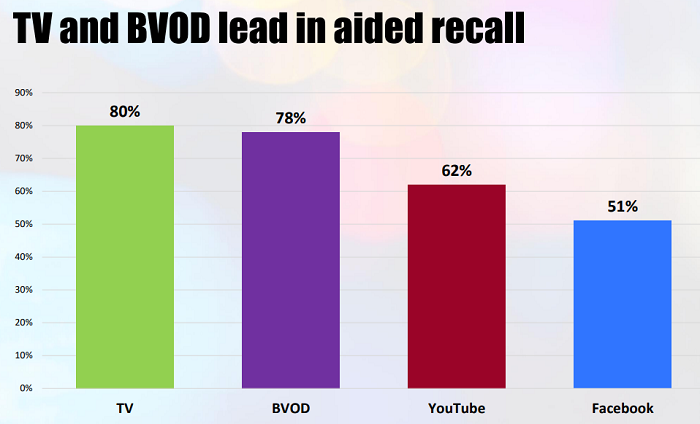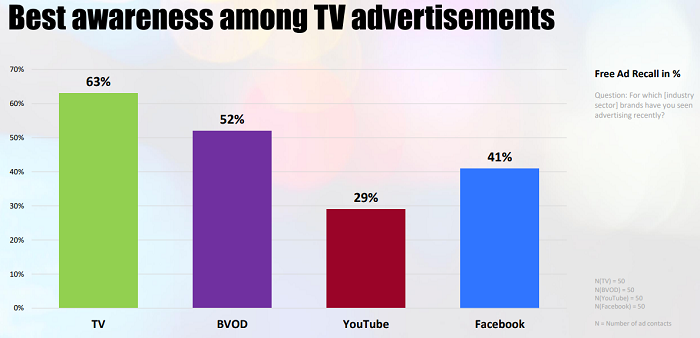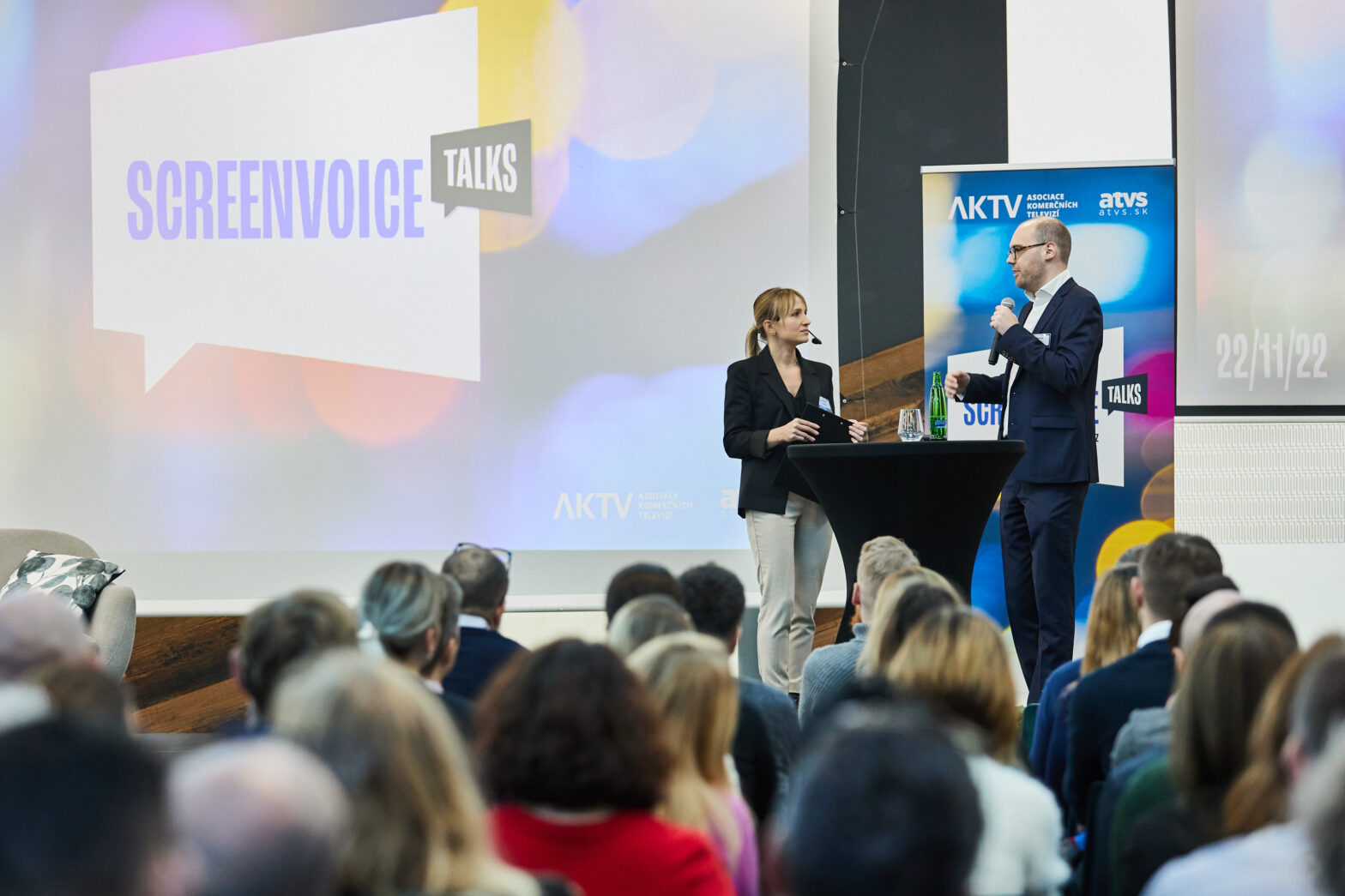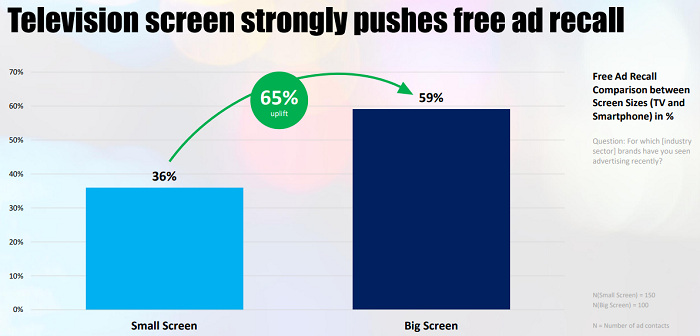The same study was conducted in the German-speaking countries, i.e. Germany, Austria and Switzerland (DACH) last year. AKTV presented the results of the Czech study at its annual Screenvoice TALKS conference dedicated to the attention of TV viewers. The resulting data shows that users most often remember a specific campaign from TV (80 percent of respondents) and from TV VOD services (78 percent). These are followed by YouTube (62 percent) and Facebook (51 percent). However, the validity of the study is rather low as only 50 respondents were included, while last year’s version from the DACH region had between 424 and 1,027 respondents.
 Source: Track the Success CZ Edition, EyeSquare, AKTV
Source: Track the Success CZ Edition, EyeSquare, AKTVTHE BIGGER THE SCREEN, THE BETTER FOR ADVERTISING
In addition, the analysts compared advertising aired on TV and TV archives (BVOD) on TV screens with video advertising on YouTube and Facebook consumed exclusively on mobile phones, not on the TV screen. Martin Vogt from Eye Square, who presented the results of the Czech study at the AKTV conference, explained this by user behaviour: users overwhelmingly use Facebook and YouTube on smartphones but TV broadcasts and TV archive programmes are watched on TV sets. However, this may have skewed the results of the study, especially in terms of the screen/display space taken up by advertising for each distribution channel.
Vogt pointed out that while TV and BVOD ad spots take up 100 percent of the screen, on Facebook on a mobile in a vertical position it is only 41 percent and on YouTube only 25 percent. What is around the ad distracts the viewer’s attention, making it harder for the user to remember the ad and less attention is paid to it. When respondents were asked to recall a specific recent ad campaign, they most often remembered it from TV (63 percent), followed by TV archives (52 percent), Facebook (41 percent) and then YouTube (29 percent). When asked to recall a detail from a given ad, respondents most often recalled watching the spot on TV (59 percent) or TV archives (48 percent). Online platforms lagged far behind: 26 percent of respondents recalled a detail from the ad on YouTube and only 16 percent on Facebook.
Source: Track the Success CZ Edition, EyeSquare, AKTV
WITH LIVE TV YOU CAN’T SKIP ADS
For the main advertising message of the campaign, however, the different platforms performed evenly, although TV broadcasting (87 percent) won out over TV archives (85 percent), YouTube (78 percent) and Facebook (74 percent). “The size of the screen and how much space the ad has on it are the main strengths of TV broadcasting and BVOD,” Martin Vogt stated. On large screens, 59 percent of respondents recalled ads for specific brands, while only 36 percent on small displays. When asked about one specific brand and its campaign, 78 percent of respondents spontaneously recalled it when watching it on a large screen, but only 56 percent on a small display. When respondents were asked to recall a detail from a particular campaign, 52 percent recalled it on the large screen while only 22 percent on the small display.
The campaign’s main message was remembered by 86 percent of respondents who saw it on a large screen and 72 percent who saw it on a small phone display. The credibility and professionalism of the channel on which the viewer watched the campaign also played a big role in remembering it. “Professional media and channels are much better and more trustworthy for transmitting the advertising message,” Martin Vogt believes.
“Television benefits from a much higher visual attention of viewers when watching ad spots. The quality of the viewer’s engagement with the campaign is crucial to the final effect of the ad,”
he adds. While the viewer usually watches the entire ad on TV and 99 percent in the TV archive, on YouTube it is 96 percent and on Facebook only 52 percent.
The advantage of a TV ad played on linear channels during a live broadcast is that the viewer cannot skip it and always has the sound on, which may not be the case with Facebook or YouTube. “The result is the best possible reach of such an ad: the highest memorability (63%), the best detail recall (59%) and the clearest message (87%),” concluded Martin Vogt. The problem with YouTube is that 71% of the time people use it on their phone in portrait mode and have the option to skip the ad. In addition, it contains a lot of amateur content created by users, which distracts users’ attention. On Facebook it is even worse as it is also most often viewed in portrait mode on a mobile phone, with the sound turned off. An environment full of content from friends does not feel as trustworthy.
 Source: Track the Success CZ Edition, EyeSquare, AKTV
Source: Track the Success CZ Edition, EyeSquare, AKTVSource: televizniweb.cz



